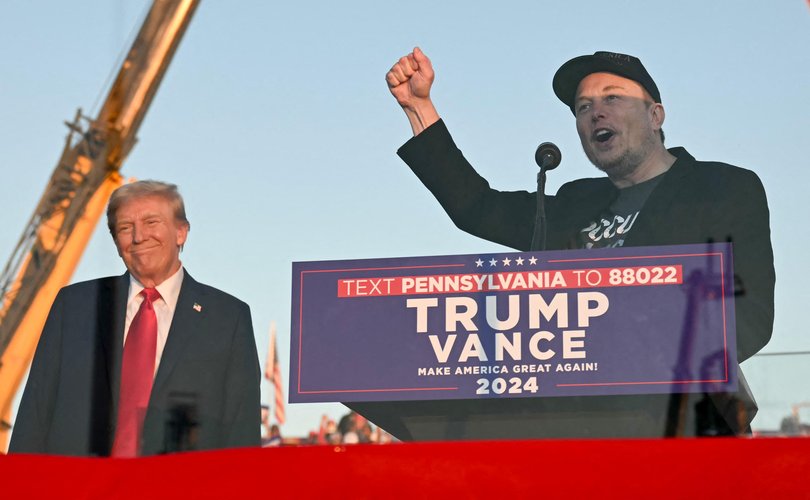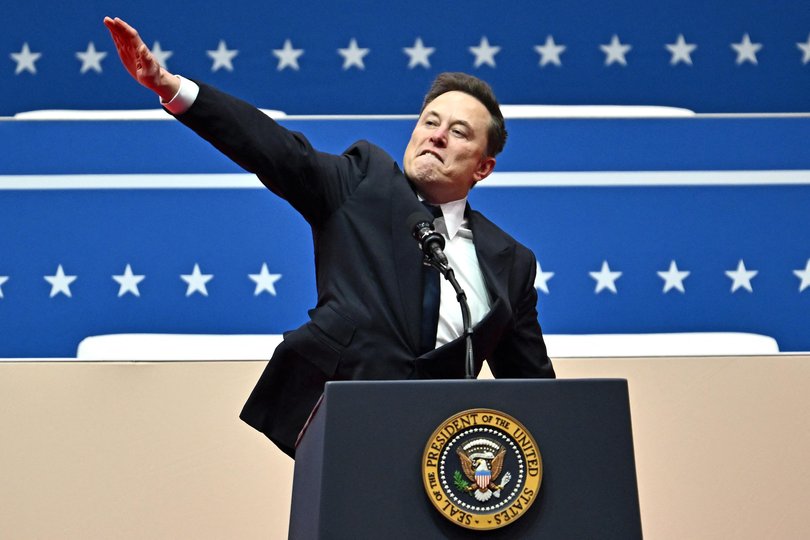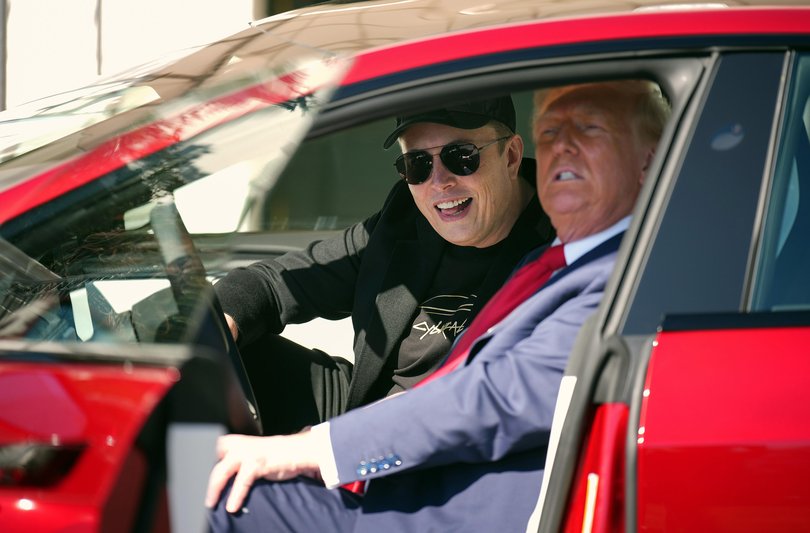The chainsaw, the salute and other moments from Elon Musk’s time in the White House

Billionaire Elon Musk is formally leaving the Trump administration, after months overseeing contentious federal spending and staffing cuts through his brainchild, the US DOGE Service.
Musk and DOGE arrived in DC with a bang, vowing to eradicate what they called waste, fraud and abuse from the government - and acting with Silicon Valley-style speed to infiltrate and take control of department after department.
An initial focus was shuttering agencies Musk disliked, notably the US Agency for International Development and the Consumer Financial Protection Bureau, which Musk bid goodbye to with a post on X, his social media site: “RIP.” Another goal was to reduce spending and staff across the government. Still another was to access troves of federal data, then use the information to identify and deport undocumented immigrants - while DOGE worked to combine databases into one central repository and analyze information using AI. Musk introduced a requirement that employees send emails listing five things they accomplished each week, which he said would increase accountability.
Sign up to The Nightly's newsletters.
Get the first look at the digital newspaper, curated daily stories and breaking headlines delivered to your inbox.
By continuing you agree to our Terms and Privacy Policy.Early on, DOGE seemed unstoppable.
Striding into federal buildings with moppy haircuts and casual clothes, the often-young DOGE representatives swiftly gained access to sensitive internal systems, sometimes calling Musk and handing the phone to low-level federal workers who resisted.
But Musk and his cost-cutting team soon ran into trouble. Litigation slowed or blocked DOGE-led mass firings. The billionaire clashed with cabinet officials who bristled at DOGE’s attempts to reshape their agencies - even getting into a West Wing shouting match with Treasury Secretary Scott Bessent.
One of DOGE’s highest-profile projects - remaking the Social Security Administration to root out fraud - backfired spectacularly, unearthing almost no misconduct but gumming up the agency’s ability to function and process claims before the administration reversed the changes.
Polls showed Musk’s work was unpopular, and Tesla profits plunged as his Government effort began to tarnish the image of his private-sector empire. And most agencies are no longer soliciting the “five things” email reports.
Many of DOGE’s cuts to Federal programs proved accidental or ephemeral, and Musk soon found himself revising down the team’s estimated savings: From $US2 trillion, to $1tr, to $150b.
Musk says DOGE will continue just fine without him. “Is Buddha needed for Buddhism?” he asked journalists in the White House this month.
The answer to that question, like the DOGE team’s status and legacy, remains up in the air. It is also unclear how the world’s richest person will continue to engage with Washington. But the still-unfolding effects of his short tenure in DC will probably have global impact for years to come.
Here are some of Musk’s major moments with the Trump team.

1. Musk takes the stage
Musk officially endorsed President Donald Trump’s re-election bid in July after the assassination attempt against him in Butler, Pennsylvania. Three months later, he joined Trump on stage at the site in what would be his unofficial introduction into the campaign, and eventually the administration.
In the weeks after his appearance in Butler, Musk’s political action committee flooded battleground states with canvassers as part of his plan to trigger a “red wave” for Trump. He said that he would hand out $1 million daily in a lottery for registered swing-state voters who signed a petition put out by his super PAC’s voter recruitment drive - which he did even after a Justice Department letter warning that he might be illegally paying to incentivise voter registration. In the final weeks of the election, his media attention, stage rallies and millions in donations made him the public face of Trump’s campaign.

2. The inauguration hand gesture
Within hours of Trump taking the oath of office for the second time, Musk was fuelling controversy. During a post-inauguration speech, Musk thanked Trump’s supporters by clasping his hand against his chest before raising it, flat-palmed, in the air, in a gesture that gave rise to international concern, with some calling it a Nazi salute.
Musk dismissed the outrage as partisan bias and “pure propaganda” on the part of “legacy media,” and Anti-Defamation League weighed in to describe the gesture as “an awkward gesture in a moment of enthusiasm, not a Nazi salute.”
But politicians and extremism experts expressed alarm that such a gesture coming from one of Trump’s closest advisers - combined with Musk’s support for Alternative for Germany, a far-Right German political party that has been classified by German intelligence as a suspected extremist organisation - signalled the broader aim of the administration.
3. Musk takes a chain saw to Federal agencies
Trump said one week after the election that he was appointing Musk and former pharmaceutical executive Vivek Ramaswamy to lead a new commission on cutting government spending and regulation.
Musk had been pushing for months for the creation of the Department of Government Efficiency, and in February, Trump signed an executive order requiring Federal agencies to work with the US DOGE Service.
In its first weeks of operation, Musk’s team launched a chaotic blitz on Washington, dismantling some agencies and terminating the employment of hundreds of thousands of civil servants. Through this work, Musk’s agents were able to gain access to highly restricted government records on millions of federal employees, much to the chagrin of security officials.
And Musk himself appeared to relish his role, brandishing a chainsaw given to him by Argentine President Javier Milei at the Conservative Political Action Conference on February 20.
A number of lawsuits have sought to slow the team’s advance. A coalition of labor unions, local governments and non-profits sued the Trump administration in April in an effort to block DOGE Federal workforce cuts, while a coalition of two dozen states and the District of Columbia sued over the dismantling of AmeriCorps.
Nineteen state attorneys general sued over DOGE’s activities at the Treasury Department in an effort to halt DOGE’s access to data systems containing sensitive financial information.
A Washington Post analysis found in February that DOGE had significantly overstated its claim of $55b in federal savings, including in that figure more than 1100 contracts that the agency said it had cancelled but had actually already completed and fully paid. DOGE modified the data after its initial release, cutting its originally listed savings by $9.3b.
In an interview with The Washington Post this week, Musk said that cutting the size of the federal government proved more difficult than he had expected and lamented the criticism aimed at DOGE.
“DOGE is just becoming the whipping boy for everything,” he said.

4. Teslas at the White House
The sight of Trump shopping for a new Tesla car in March, as a White House driveway was briefly transformed into a makeshift car lot, was a sign of the President’s strong support for Musk. But the move also drew ethical questions over the president’s commercial endorsement of a private company.
It wasn’t long before Tesla became a target for the anger of those who opposed Musk, with a string of attacks on Tesla storefronts, charging stations and vehicles, as well as protests. Tesla suffered a 71 percent dip in profits during the first quarter of the year compared with the same period last year, with experts and analysts largely attributing the company’s woes to Musk’s role within the Trump administration.
But Musk’s role in Tesla also put him on a collision course with the Trump administration over a key policy: tariffs. While Musk’s public criticism was directed at one of Trump’s key advisers on the policy, rather than the president himself, he has opposed tariffs since Trump’s first term: Both China and the United States are major manufacturing and consumer hubs for Tesla.
5. Big money - but no win - in the Wisconsin Supreme Court race
Musk made headlines by handing $1m cheques to two Wisconsin voters as he tried to help conservatives take control of the swing state’s Supreme Court. But despite his heavy engagement and spending - the billionaire helped turn the Wisconsin race into by far the most expensive judicial contest in US history - his favoured candidate, Brad Schimel, lost by 10 percentage points to Democrat-backed Susan Crawford.
Even before the April 1 vote, which was seen as a referendum on Musk and Trump, Musk’s poll numbers were declining. And while it’s not clear that his involvement directly hurt the Republican Party, it fared worse in the Supreme Court race than in the other Wisconsin race where Musk wasn’t such a factor: the vote for State schools superintendent.
The Supreme Court loss left some Republicans with questions about Musk’s involvement in other races - and in Trump’s administration.
